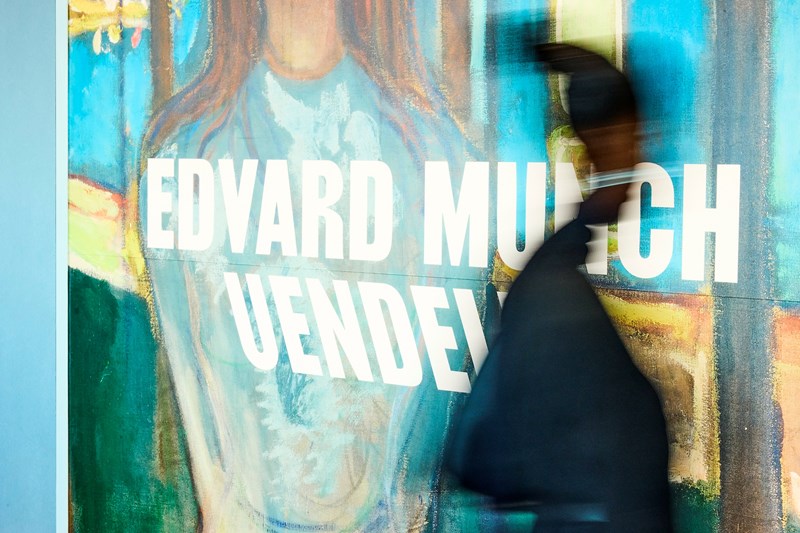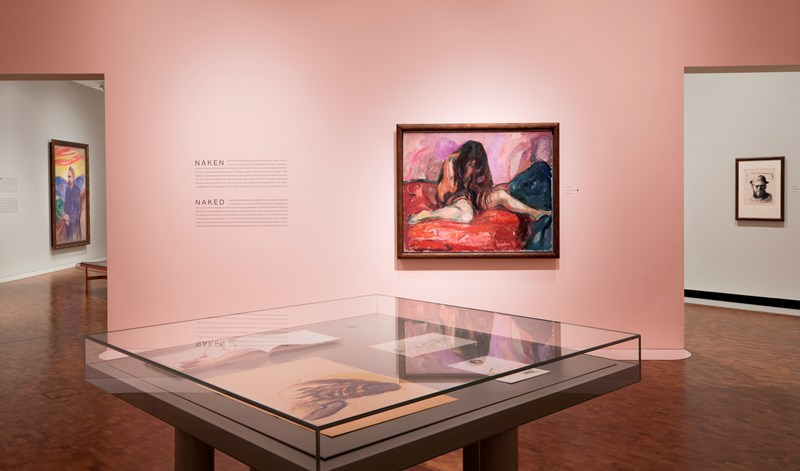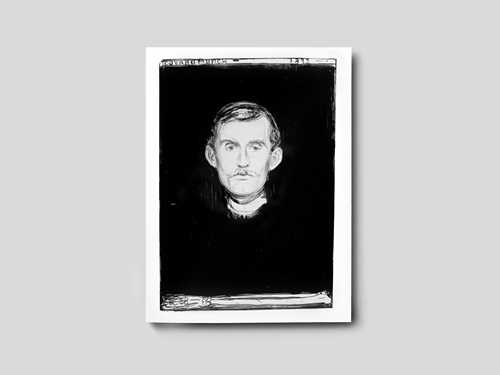Infinite Change – Always Something New to Discover
Did you know that Infinite never looks the same twice?

Photo: Helge Brekke, Munchmuseet
Many visitors assume that a collection display is the same as a permanent exhibition. But at MUNCH, Infinite is constantly evolving. Several times a year, works are exchanged – whether because they are on loan, undergoing conservation, receiving a new frame, or being replaced by entirely different works. This means you can return again and again and always experience Edvard Munch in new ways.
A Living Collection Display
Infinite presents 130 works from Edvard Munch’s artistic career – from iconic motifs to lesser-known masterpieces. Yet while the framework remains the same, the content is dynamic.
“There are several reasons why we change works in our collection displays,” explains registrar Margrete Molid Kvæl. “We have a high loan frequency to museums worldwide, we must care for a fragile collection, and we also make curatorial changes along the way.”
Reasons for Change
Loans to other museums
MUNCH receives loan requests from around the world every week, and three to four loans are made annually from Infinite. A single loan can involve anything from one to eleven works. In addition, works from Infinite are sometimes shown in other MUNCH exhibitions.
Preservation and maintenance
Many works need to rest in darkness to avoid light damage, receive new frames or glazing, or undergo conservation.
Curatorial changes
At times, we wish to tell a new story within the exhibition, and works are replaced to create fresh connections.
Behind the Scenes – A Precision Task
When a work is removed from or added to Infinite, a carefully coordinated process takes place.
“There are many factors that need to align,” says Margrete. “The work must fit the exhibition narrative, be stable enough for display, and not be on loan elsewhere. There are some late evenings of art installation, but that’s also what keeps the exhibition alive – always ready to reveal new treasures.”
This painting will be on view in Infinity in autumn 2025. The subject is the fight between Edvard Munch and Ludvig Karsten, and it will be displayed in connection with the museum’s Ludvig Karsten exhibition opening on 17 October 2025.
Edvard Munch, The Fight, 1932, oil on canvas. Photo: Munchmuseet
The Curator’s Challenge: Finding the Perfect Replacement
Curator Trine Otte Bak Nielsen is responsible for selecting the works that replace those taken down.
“The wonderful thing about Munch is that he often created multiple versions of the same motif,” says Trine. “But sometimes we need to find something entirely different. Then it’s about choosing works that support the exhibition concept, while also seizing the opportunity to highlight pieces that are rarely on display.”
Why Art Needs to Rest
Edvard Munch’s working methods have given us unique works – but also significant conservation challenges. He often painted outdoors, left works exposed to the elements, and avoided varnish, which leaves a matte surface. Some paintings were even made on cardboard, making them especially fragile.
Works on paper, such as drawings and watercolours, are particularly vulnerable because materials like paper and pigments naturally deteriorate over time – and exposure to light accelerates this process. For this reason, some works must rest in darkness between exhibition periods, and we test their light sensitivity using microfading.

In particular, the drawings and prints on display in Infinity are sensitive to light and must be replaced at intervals of six, twelve and eighteen months.
Photo: Ove Kvavik, Munchmuseet
An Exhibition That Never Stands Still
Infinite is a collection display – but not a permanent exhibition.
“We have many changes of works throughout the year,” says Trine. “That means there is always something new to discover. I like to say ‘see you again’ to all our visitors, and I hope they return soon.”


